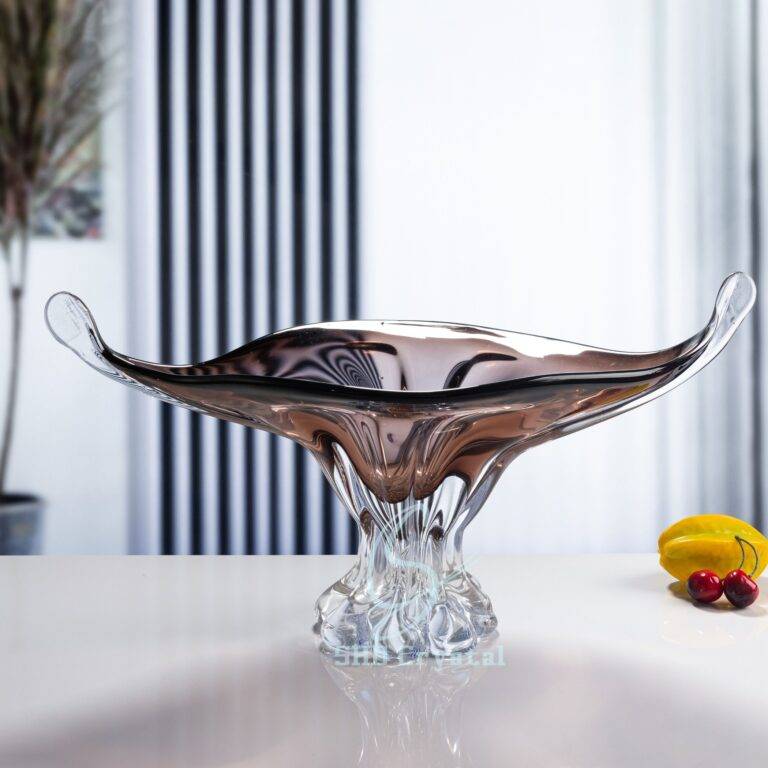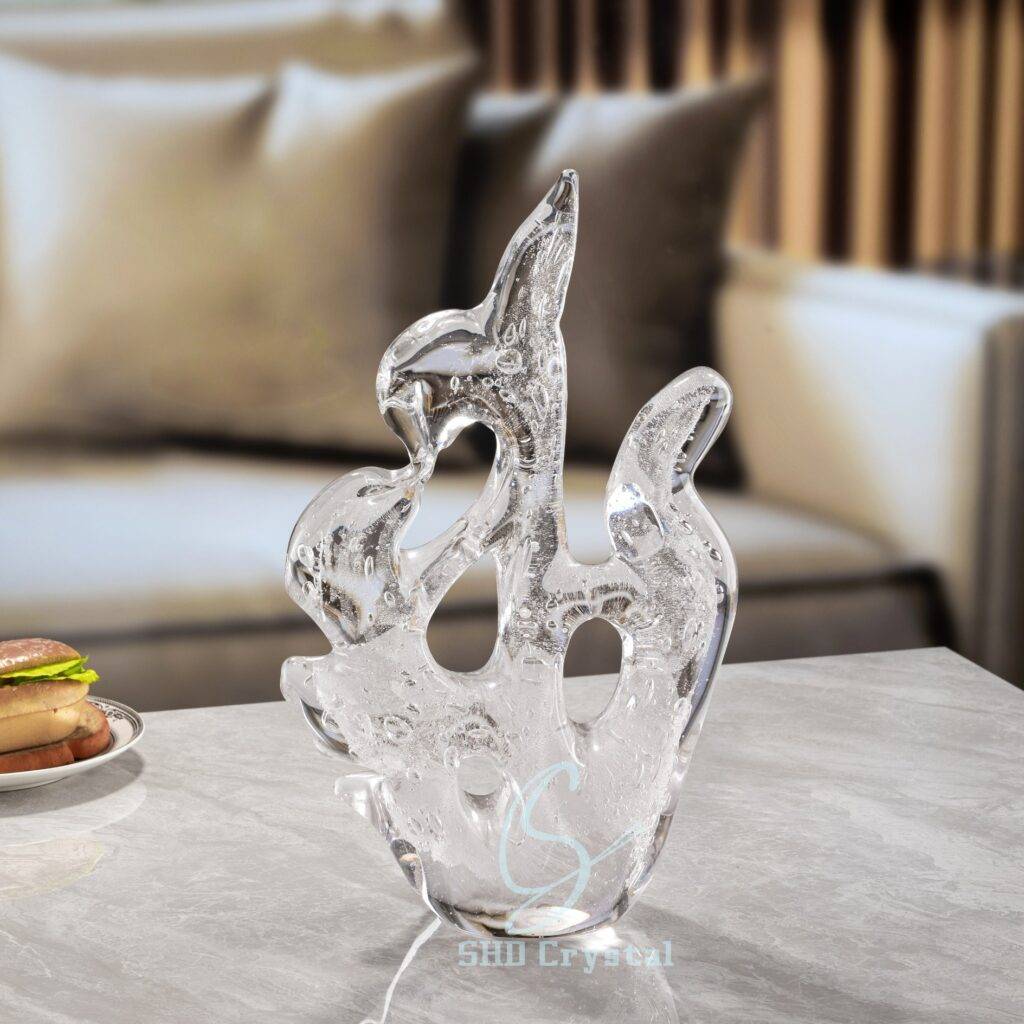> Blogs >Is 24% PbO Lead Crystal Safe? Key Safety Tips for Enjoying Luxury Glassware
Is 24% PbO Lead Crystal Safe? Key Safety Tips for Enjoying Luxury Glassware
Core keyword: 24% pbo lead crystal safe
The elegance of 24% PbO lead crystal—with its brilliant sparkle and timeless craftsmanship—often sparks a common question: Is 24% pbo lead crystal safe for everyday use? While these luxurious pieces are prized for special occasions, concerns about lead safety deserve careful attention.
Understanding Lead Leaching in 24% PbO Lead Crystal
At the heart of the “24% pbo lead crystal safe” conversation is lead oxide (PbO), which makes up 24% of the crystal’s weight. Lead is a heavy metal, and like all lead-containing materials, 24% PbO crystal can release trace amounts of lead into liquids under specific conditions. This process, called lead leaching, occurs when acidic substances (such as wine, juice, or vinegar) come into prolonged contact with the crystal’s surface. The rate of leaching depends on factors like:
- Prolonged contact(days/weeks of storage)
- High acidity in liquids:
- Damaged surfaces(chipped or cracked crystal)

Key Factors in Answering “Is 24% PBO Lead Crystal Safe?”
1. Frequency of Use
24% PbO crystal is generally safe for occasional use, such as serving drinks during meals. The short contact time with liquids (a few hours at most) means minimal lead migration. Problems arise with long-term storage—for example, using crystal decanters to hold wine for days or using bowls to store acidic foods.
2. Regulatory Standards for Safety
Governments and organizations set limits for lead migration in food-contact materials:
- S. FDA: Permits up to 0.5 parts per million (ppm) of lead in beverages stored in crystal for 24 hours.
- EU Regulations (EC No 1935/2004): Restrict lead migration to 0.3 ppm for acidic foods.
Tests show that properly used 24% PbO crystal typically falls within these limits for short-term use, but repeated or prolonged use can exceed them.
3. Comparing 24% PbO to Other Lead Concentrations
While 24% PbO is the premium standard, all lead crystal (10–30% PbO) carries some leaching risk. Higher-lead crystals may leach slightly more, but usage habits matter most—even low-lead crystal can pose issues with improper use.
Safe Usage Guidelines for 24% PbO Lead Crystal
1. Avoid Long-Term Liquid Storage
- Do: Use crystal for serving during meals or events, pouring liquids just before use.
- Don’t: Store wine, juice, or other acidic liquids in crystal decanters or glasses for more than 24 hours. Opt for lead-free glass or stainless steel containers for long-term storage.
2. Choose Wisely for Food Contact
- Reserve 24% PbO crystal for non-acidic or rarely acidic foods(e.g., plain water, spirits, or dry snacks).
- For acidic dishes (salsas, dressings), use lead-free dinnerware.
3. Inspect and Maintain Your Crystal
- Check for Damage: Discard chipped or cracked pieces, as damaged surfaces increase leaching risks.
- Gentle Cleaning: Wash crystal by hand with mild soap (avoid harsh abrasives) to preserve the surface and prevent micro-scratches that could trap residue.
4. Prioritize Decorative Use
24% PbO crystal is entirely safe for non-food applications, such as:
- Displaying flowers in vases
- Using as decorative centerpieces
- Collecting figurines or chandeliers

Addressing Myths About 24% PbO Lead Crystal Safety
Myth 1: “Lead Crystal Is Banned for Food Use”
False. While some countries restrict lead content in food-contact materials, high-quality 24% PbO crystal that meets safety standards is legal for use—with the caveat of responsible, short-term use.
Myth 2: “Lead-Free Crystal Is 100% Safe”
While lead-free alternatives (often labeled “crystal glass” or “lead-free crystal“) eliminate lead concerns, they lack the optical brilliance and weight of 24% PbO crystal. They’re a safe choice for daily use but not a direct substitute for luxury lead crystal.
More information about the applications of lead-free crystals.
Myth 3: “Rinsing Crystal Removes All Lead Risk”
Rinsing helps remove surface residue, but it doesn’t eliminate leaching potential during use. Always follow time and usage guidelines, even with clean pieces.
Conclusion: Enjoying 24% PbO Lead Crystal Safely
The answer to “is 24% pbo lead crystal safe” lies in balance: these pieces are safe for occasional, short-term use when cared for properly, but the key is avoiding prolonged contact with acidic liquids. By treating 24% PbO crystal as a special-occasion item rather than daily dinnerware, you can admire its beauty while minimizing risks.
Remember that 24% PbO lead crystal is a symbol of craftsmanship and luxury, meant to be cherished in moderation. With mindful usage and regular maintenance, it can remain a stunning part of your home without compromising safety.
At SHD Crystal, we engineer 24% PbO lead crystal with safety innovations
Explore our 24% PbO lead crystal art for enjoying luxury glassware

- : info@shdcrystal.com
- : +86-755-2335 8353
- : No. 68 Shasong Road, Shajing Street, Bao'an District, Shenzhen, Guangdong Province
Follow us